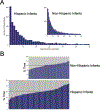The mountain stream of infant development
- PMID: 36961322
- PMCID: PMC10184132
- DOI: 10.1111/infa.12538
The mountain stream of infant development
Abstract
Development is complex. It encompasses interacting domains, at multiple levels, across nested time scales. Embracing the complexity of development-while addressing the challenges inherent to studying infants-requires researchers to make tough decisions about what to study, why, how, where, and when. My own view is inspired by a developmental systems approach, and echoed in Esther Thelen's (2005) mountain stream metaphor. Like a river that carves its course, the active infant navigates the social and physical environment and generates rich inputs that propel learning and development. Drawing from my experiences, I offer some recommendations to guide research on infants. I encourage researchers to embrace discovery science; to observe infants in ecologically valid settings; to recognize the active and adaptive nature of infant behavior; to break down silos and consider the nonobvious; and to adopt full transparency in all aspects of research. I draw on cascading influences in infant play, language, and motor domains to illustrate the value of a bottom-up, cross-domain, collaborative approach.
© 2023 International Congress of Infant Studies.
Figures











References
-
- Abney DH, Dale R, Louwerse MM, & Kello CT (2018). The bursts and lulls of multimodal interaction: Temporal distributions of behavior reveal differences between verbal and non‐verbal communication. Cognitive science, 42(4), 1297–1316. - PubMed
-
- Adolph KE (2023). Reflections: Eleanor Gibson. In Szokolszky A, Read C, & Palatinus Z (Eds.), Intellectual journeys in ecological psychology: Interviews and reflections from pioneers in the field New York: Routledge, pp. X-X.

